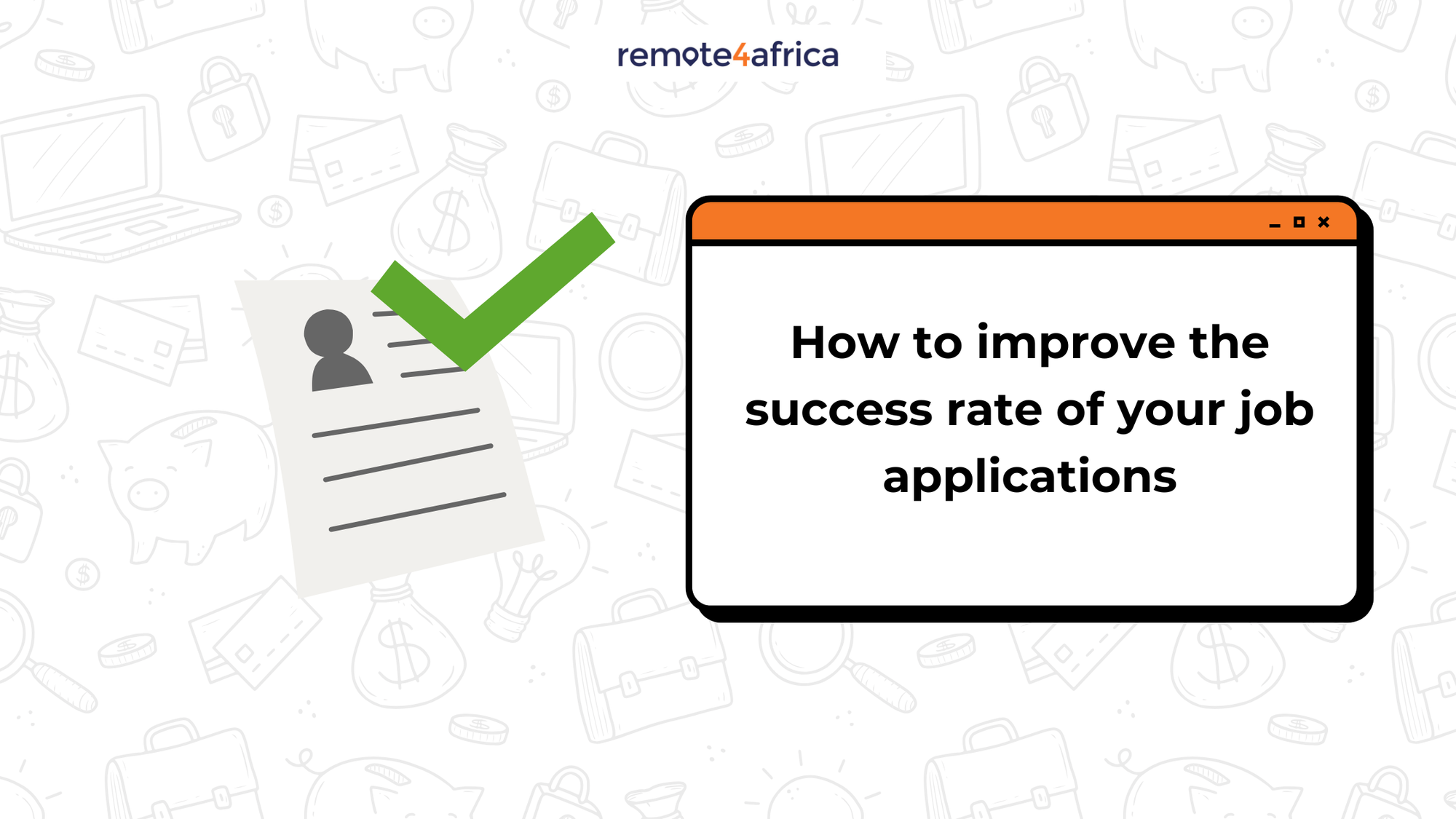Never Got an Interview Invite? How to Improve the Success Rate of Your Job Applications

All over social media and chat groups you see people complaining how they have applied to hundreds, in some cases thousands of jobs but never as much as got invited to interviews.
Applying to hundreds of jobs and not getting invited to interviews is definitely soul crushing.
Find new remote jobs you can apply for daily
If you are in that category what you need to do is look for what could be the cause of your low success rate in getting interviews and fix them.
That’s what this article is written to help you do.
So why do people fail to get interview invites even after applying to lots of jobs?
Why Do People Fail to Get Interview Invites Even After Applying to Lots of Jobs?
Here are major reasons you may not be getting invited for interviews despite all the job applications you've made this year.
Poorly Written CV/Resume
A CV full of spelling mistakes, vague job descriptions, or poorly structured information is a deal breaker. Recruiters spend only a few seconds scanning resumes so if yours is unclear or unprofessional, it goes straight to the rejection pile.
Not Ensuring CVs Are Relevant to the Jobs They Apply For
Many job seekers recycle the same CV for every application. This one-size-fits-all approach rarely works. If your CV doesn’t highlight the skills and achievements that matter for a specific role, recruiters won’t see the match.
CVs That Don’t Scale Through Applicant Tracking Systems (ATS)
This is somehow related to the reason above. Most bigger companies use Applicant Tracking Systems to accept and filter applications before a human even sees them. If your CV doesn’t include the right keywords, or if it uses complex formatting with images or tables, the ATS may fail to read it, leading to automatic rejection.
Weak or Generic Cover Letters
Submitting the same generic “To whom it may concern” letter with every application is ineffective. Employers want to see that you understand their company and the specific role you’re applying for.
Applying for Roles Indiscriminately Without Being Qualified
Some job seekers apply to every job they see, even if they don’t meet the requirements. While stretching a little is fine, applying for jobs that are far beyond your skill set is a waste of time and lowers your confidence when rejections pile up.
Poor or No Online Presence
In today’s world, recruiters check LinkedIn and sometimes other platforms before inviting candidates to interviews. If your online profile is outdated, incomplete, or non-existent, it can make you look unserious or invisible.
How to Improve the Success Rate of Your Job Applications and Land Interviews
1. Create a Strong CV/Resume
Your CV is your first impression. Make it professional, clear, and concise. Highlight your achievements, not just your responsibilities. For example, instead of saying “Handled customer service tasks,” say “Resolved 95% of customer complaints within 24 hours, improving customer satisfaction ratings.”
Check out some of our resources to help you create a strong, attractive CV;
- CVHack: Use the AI enabled CV builder to create a new professional CV in minutes
- CV Templates: Access different professional CV templates you can easily download and edit for yourself
- CV Tips: Browse several high quality articles on how to create and improve your CV for job search success
2. Tailor Your CV for Each Job Application
Don’t just send out the same CV everywhere. Read the job description carefully and adjust your CV to emphasize the skills and experiences that align with the role. Tailoring shows recruiters that you put in effort and are serious about the role. You can use this CV Builder and Manager to manage the process of updating and adapting your CV for any job application
3. Optimise Your CV for Applicant Tracking Systems
Keep your CV simple in design. This means no images, fancy fonts, or complicated tables. Use keywords directly from the job description so the ATS can pick up your relevance. See some ATS-friendly templates.
4. Write High-Quality, Targeted Cover Letters
Write a new cover letter for each application. Address the hiring manager by name if possible, and mention why you’re interested in the specific role and company. Share how your skills can add value, and keep the tone professional but enthusiastic.
5. Only Apply to Jobs You Reasonably Qualify For
It’s fine to apply for roles where you meet 60–80% of the requirements, but avoid roles where you don’t meet even the basic qualifications. Focus your energy on jobs that are within reach and where your skills match.
6. Strengthen Your Online Presence
Update your LinkedIn profile with a professional headshot, strong headline, and detailed experience section. Showcase your skills, projects, and achievements. Recruiters often search for candidates online, and a polished profile can significantly boost your chances of getting noticed. Have a complete profile on any platform relevant to your job area eg Dribbble, Behance for designers etc.
Conclusion
If you’ve applied to dozens or even hundreds of jobs and never received an interview invite, it could be for a variety of reasons, most of which we mentioned above.
By creating a strong CV, tailoring each application, optimising for ATS, writing targeted cover letters, applying strategically only to jobs you have at least 60% of the requirements for, and strengthening your online presence, you can transform your job search and finally start landing those all-important interview invites.
Remember: job applications are not just about quantity, but quality and strategy.
